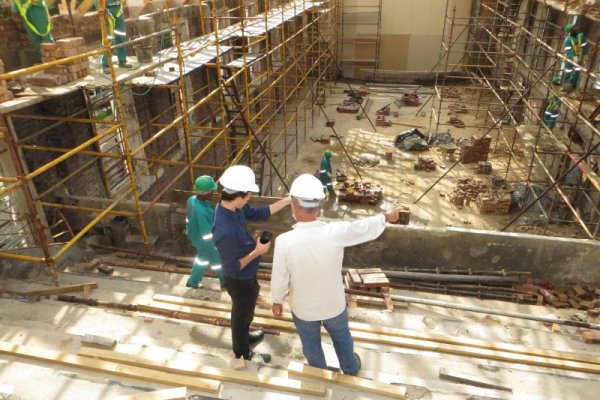28.01.2021

Ensuring occupational safety is one of the essential, often underestimated challenges during construction. Since many different influencing factors converge when assessing potential sources of danger, the EU Horizon 2020-funded project BIM2TWIN aims to develop a digital platform that serves as a sound basis for action for those responsible for construction sites. Within the framework of the project, the Chair of Computer Science in Civil Engineering, together with practical partners, is developing various methods and prototypes for the optimal planning and control of construction machinery on construction sites.
This includes the optimal selection and positioning of construction equipment depending on the local conditions and the planned construction sequence; the determination of possible routes (trajectories) on the construction site for the execution of individual construction processes, taking into account the dynamic construction site layout; the selection and configuration of suitable acquisition concepts for monitoring different construction equipment on the construction site; the development of innovative concepts for the semi-automatic control of construction equipment and real-time detection of possible obstacles and hazards, as well as methods for analyzing the recorded actual processes and comparing them with the planned target processes to identify the causes of potential problems.
Ensuring occupational safety is one of the essential, often underestimated challenges during construction. Since many different influencing factors converge when assessing potential sources of danger, the EU Horizon 2020-funded project BIM2TWIN aims to develop a digital platform that serves as a sound basis for action for those responsible for construction sites. Within the framework of the project, the Chair of Computer Science in Civil Engineering, together with practical partners, is developing various methods and prototypes for the optimal planning and control of construction machinery on construction sites.
This includes the optimal selection and positioning of construction equipment depending on the local conditions and the planned construction sequence; the determination of possible routes (trajectories) on the construction site for the execution of individual construction processes, taking into account the dynamic construction site layout; the selection and configuration of suitable acquisition concepts for monitoring different construction equipment on the construction site; the development of innovative concepts for the semi-automatic control of construction equipment and real-time detection of possible obstacles and hazards, as well as methods for analyzing the recorded actual processes and comparing them with the planned target processes to identify the causes of potential problems.